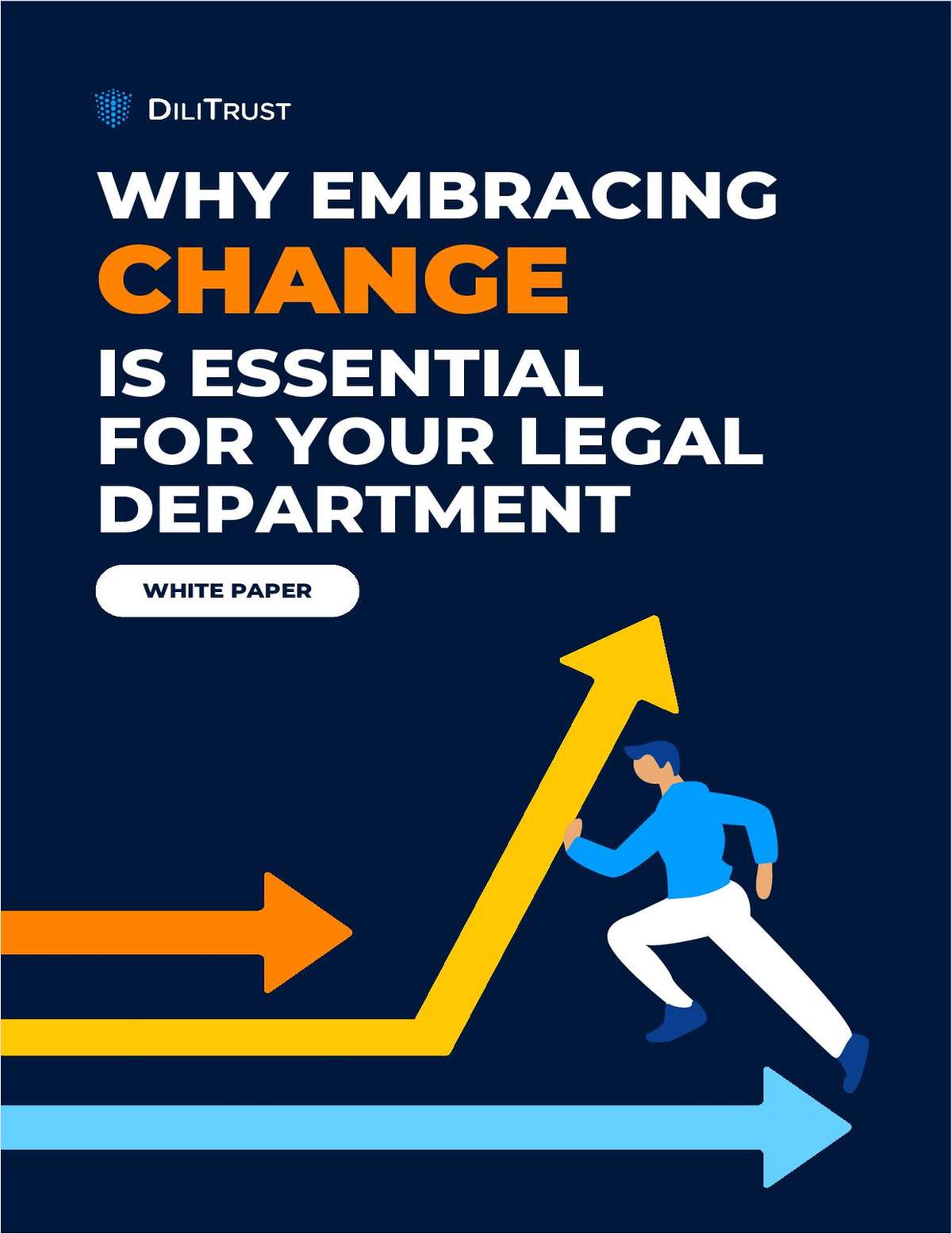20. Innovations: The Good, the Bad and the Obsolete
Not all innovations hit the spot with clients. To get a deeper understanding of this area of disconnect with clients, we now look at some test cases.
September 10, 2021 at 12:50 PM
3 minute read
The original version of this story was published on Lean Adviser
Previously, we discussed how not all innovations hit the spot with clients. To get a deeper understanding of this area of disconnect with clients, we now look at some test cases.
|- The Dream Docket: Law firm A has a new case management system. It not only allows for research, drafting and other case management work to be handled from anywhere, it's tied into time recording. As a result, the firm closes an office and insists on more fee earners working remotely part or full time. This may be a smart investment, but it only benefits the firm. If the system had billing analysis software to enable it to give more accurate cost prediction to clients, this would have added some certainty and client value.
- The Cloudy Idea: Law firm B has decided to embrace the green movement by creating a paperless office, and it invests in a system to keep client files in a secure and cloud-based system. At the time, these technologies were a game-changer, but now they are common tools of the trade. Just like the fax machine, the pager, or the DVD, obsolescence of innovations is only a matter of time, and when everybody has one, it's no longer an innovation.
- Access for All: Law firm C created a virtual practice group to drive efficiencies in the delivery of legal services to low-income immigrants. With assistance from the firm's technology department, a platform was created that provides attorneys and staff access to tools and resources needed for immigration matters. The platform was designed to be able to pull attorney experience and allows for a quick determination on who is well-positioned to handle or oversee a matter. This winning innovative solution was able to help those who have had issues with access to the legal system and tackled a problem that was exacerbated during COVID-19.
Let's reiterate what an innovation is. It is a creative invention that directly responds to a specific client problem.
Here is a checklist to separate good, bad and obsolete innovations:
|- It must be for the benefit of the clients, so start by asking what problems they see and what sort of innovation they would value.
- It must be up to date, durable and adaptable to prevent early obsolescence.
- It must be usable; if it's too complex for everyday application it may as well not exist.
- It must have measurable benefits, not theoretical ones.
- It must be relevant to clients and provide a tangible value for them — be it time or cost.
|
NOT FOR REPRINT
© 2024 ALM Global, LLC, All Rights Reserved. Request academic re-use from www.copyright.com. All other uses, submit a request to [email protected]. For more information visit Asset & Logo Licensing.
You Might Like
View All

Groen Strokoff O'Neill, LLC adds accomplished Trial Lawyer, William "Bill" Coppol.
1 minute readCushman Benchmark Survey (the “Sweepstakes”) Official Terms and Conditions
7 minute readTrending Stories
Who Got The Work
Michael G. Bongiorno, Andrew Scott Dulberg and Elizabeth E. Driscoll from Wilmer Cutler Pickering Hale and Dorr have stepped in to represent Symbotic Inc., an A.I.-enabled technology platform that focuses on increasing supply chain efficiency, and other defendants in a pending shareholder derivative lawsuit. The case, filed Oct. 2 in Massachusetts District Court by the Brown Law Firm on behalf of Stephen Austen, accuses certain officers and directors of misleading investors in regard to Symbotic's potential for margin growth by failing to disclose that the company was not equipped to timely deploy its systems or manage expenses through project delays. The case, assigned to U.S. District Judge Nathaniel M. Gorton, is 1:24-cv-12522, Austen v. Cohen et al.
Who Got The Work
Edmund Polubinski and Marie Killmond of Davis Polk & Wardwell have entered appearances for data platform software development company MongoDB and other defendants in a pending shareholder derivative lawsuit. The action, filed Oct. 7 in New York Southern District Court by the Brown Law Firm, accuses the company's directors and/or officers of falsely expressing confidence in the company’s restructuring of its sales incentive plan and downplaying the severity of decreases in its upfront commitments. The case is 1:24-cv-07594, Roy v. Ittycheria et al.
Who Got The Work
Amy O. Bruchs and Kurt F. Ellison of Michael Best & Friedrich have entered appearances for Epic Systems Corp. in a pending employment discrimination lawsuit. The suit was filed Sept. 7 in Wisconsin Western District Court by Levine Eisberner LLC and Siri & Glimstad on behalf of a project manager who claims that he was wrongfully terminated after applying for a religious exemption to the defendant's COVID-19 vaccine mandate. The case, assigned to U.S. Magistrate Judge Anita Marie Boor, is 3:24-cv-00630, Secker, Nathan v. Epic Systems Corporation.
Who Got The Work
David X. Sullivan, Thomas J. Finn and Gregory A. Hall from McCarter & English have entered appearances for Sunrun Installation Services in a pending civil rights lawsuit. The complaint was filed Sept. 4 in Connecticut District Court by attorney Robert M. Berke on behalf of former employee George Edward Steins, who was arrested and charged with employing an unregistered home improvement salesperson. The complaint alleges that had Sunrun informed the Connecticut Department of Consumer Protection that the plaintiff's employment had ended in 2017 and that he no longer held Sunrun's home improvement contractor license, he would not have been hit with charges, which were dismissed in May 2024. The case, assigned to U.S. District Judge Jeffrey A. Meyer, is 3:24-cv-01423, Steins v. Sunrun, Inc. et al.
Who Got The Work
Greenberg Traurig shareholder Joshua L. Raskin has entered an appearance for boohoo.com UK Ltd. in a pending patent infringement lawsuit. The suit, filed Sept. 3 in Texas Eastern District Court by Rozier Hardt McDonough on behalf of Alto Dynamics, asserts five patents related to an online shopping platform. The case, assigned to U.S. District Judge Rodney Gilstrap, is 2:24-cv-00719, Alto Dynamics, LLC v. boohoo.com UK Limited.
Featured Firms
Law Offices of Gary Martin Hays & Associates, P.C.
(470) 294-1674
Law Offices of Mark E. Salomone
(857) 444-6468
Smith & Hassler
(713) 739-1250








